Medieval architecture refers to the architectural style that was prevalent in Europe during the Middle Ages, roughly from the 5th century to the 15th century. It encompasses a wide range of architectural forms and techniques that evolved over this period.
-
Romanesque Architecture: The early medieval period saw the continuation of Romanesque architecture, which drew inspiration from Roman architecture. It is characterized by thick walls, rounded arches, small windows, and sturdy construction. Romanesque buildings include churches, castles, and fortifications.
-
Gothic Architecture: In the 12th century, Gothic architecture emerged as a distinct style. It is known for its pointed arches, ribbed vaults, flying buttresses, and large stained glass windows. Gothic cathedrals are the most iconic examples of this style, with notable structures like Notre-Dame de Paris and Chartres Cathedral.
-
Castles and Fortifications: Medieval architecture also includes the design and construction of castles and fortifications. These structures were built for defensive purposes and often featured thick walls, towers, moats, and drawbridges. Castles served as residences for nobles and provided protection during times of conflict.
-
Monastic Architecture: Monasteries and convents played a significant role in medieval society, and their architecture reflected their spiritual and communal nature. Monastic buildings typically included cloisters, chapels, dormitories, and refectories. Examples of monastic architecture can be seen in the abbey of Mont Saint-Michel in France or the monastic complex of Cluny Abbey.
-
Vernacular Architecture: Alongside grand religious and noble structures, medieval architecture also encompassed vernacular architecture, which refers to the local, everyday buildings constructed by common people. These structures varied greatly depending on the region and available resources but often featured timber framing, thatched roofs, and wattle-and-daub construction.
-
Towns and City Architecture: Medieval towns and cities developed their own architectural styles, characterized by narrow streets, half-timbered houses, and fortified walls. Market squares, town halls, and guildhalls were also prominent features of urban architecture during this period.
This is one of the forty original architectural styles based on which I generated references for the interior and exterior of the target building.
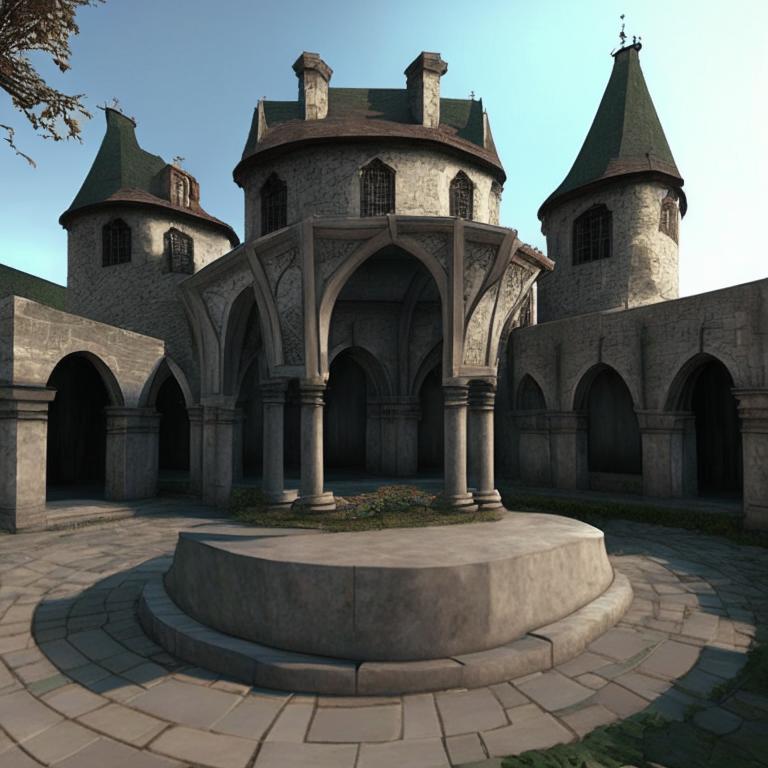
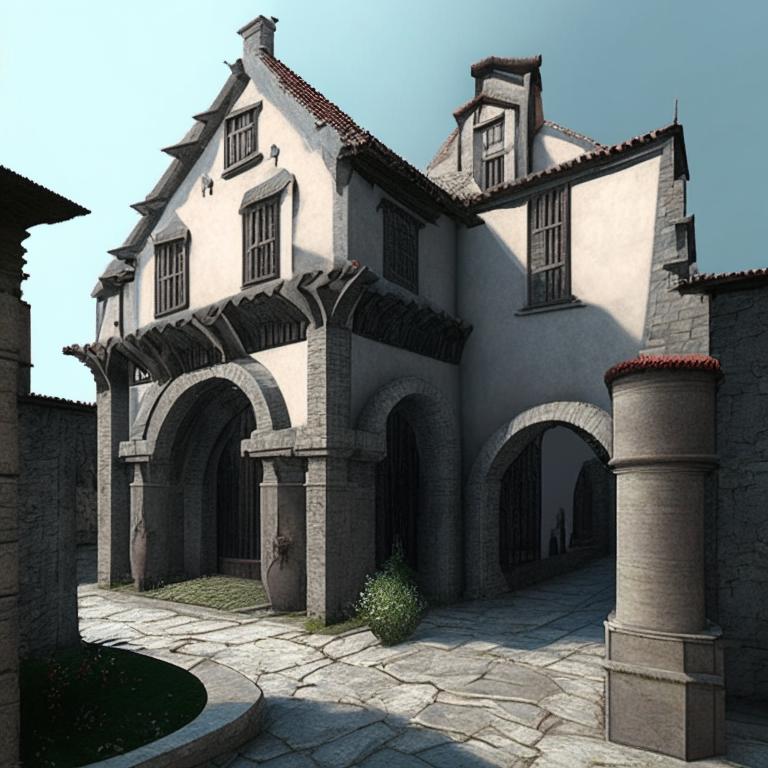
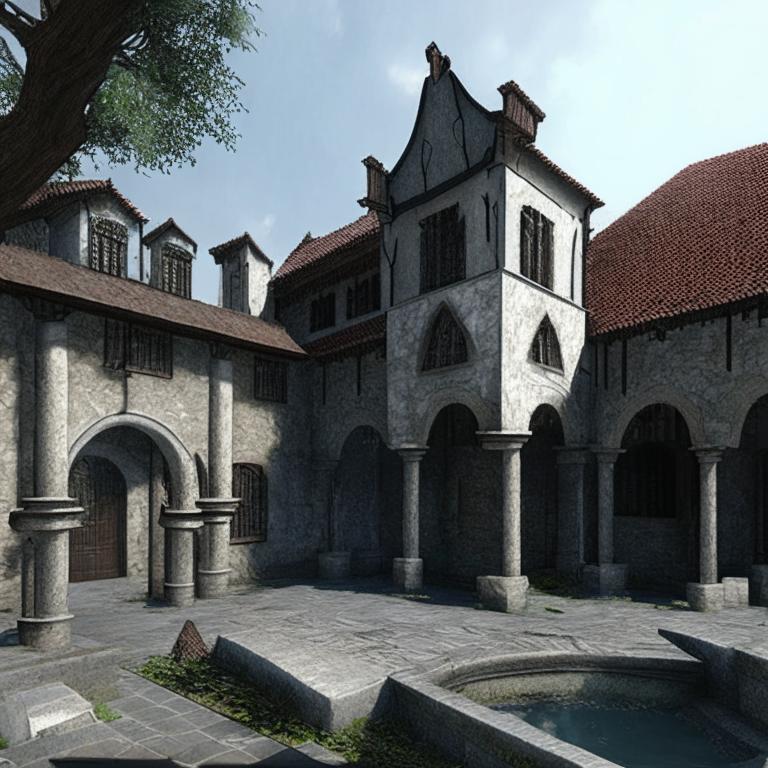
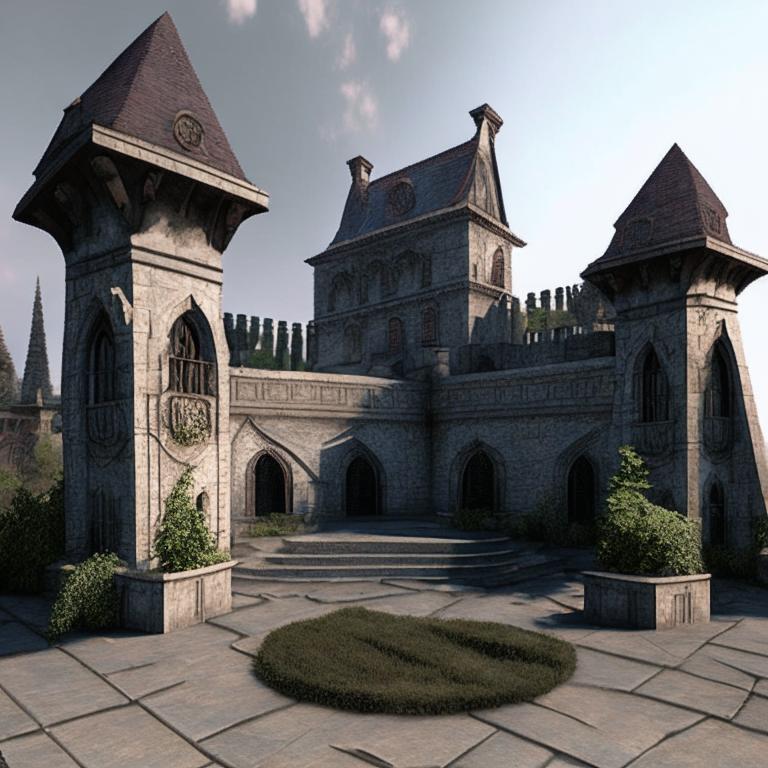
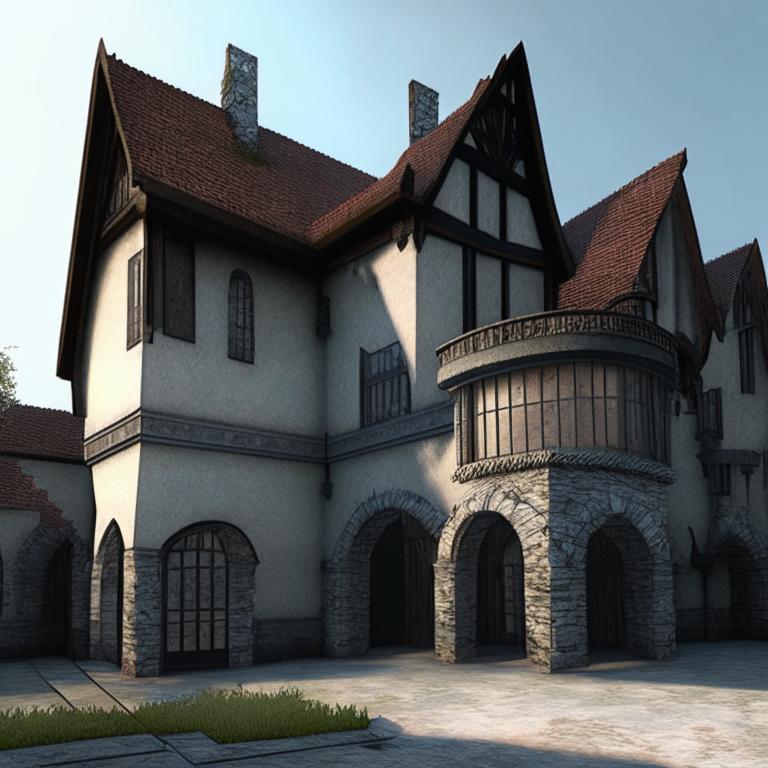
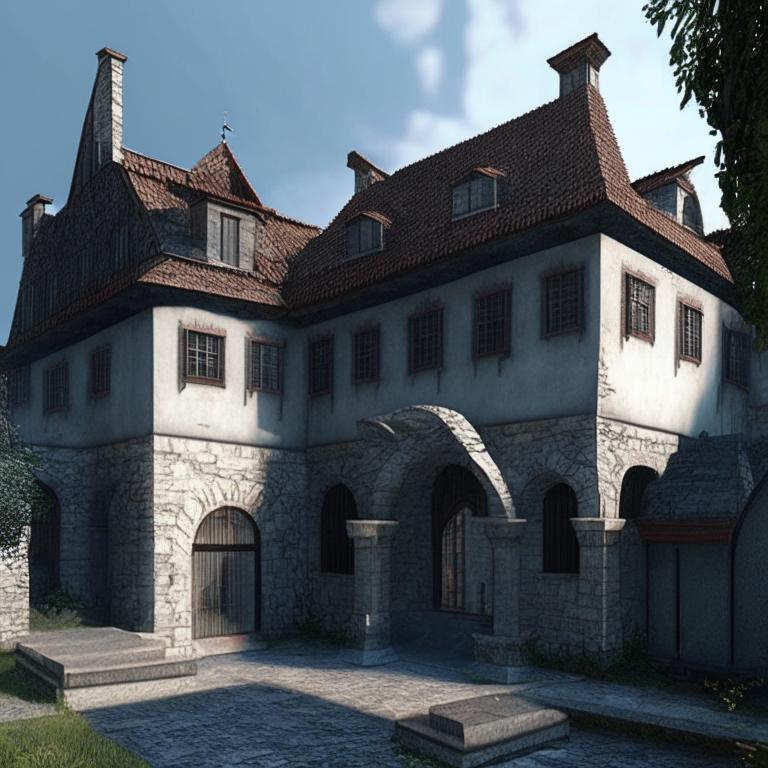

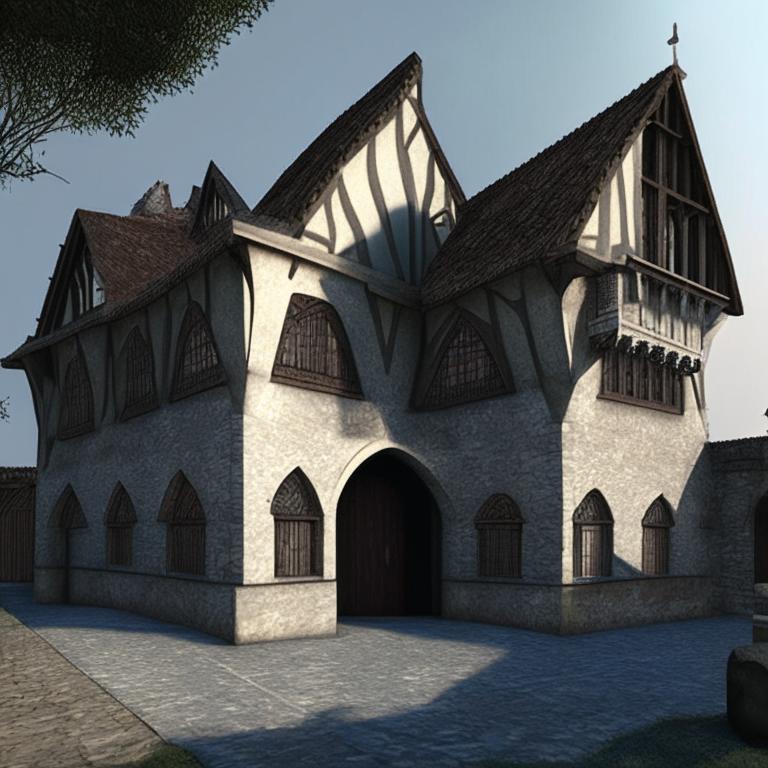
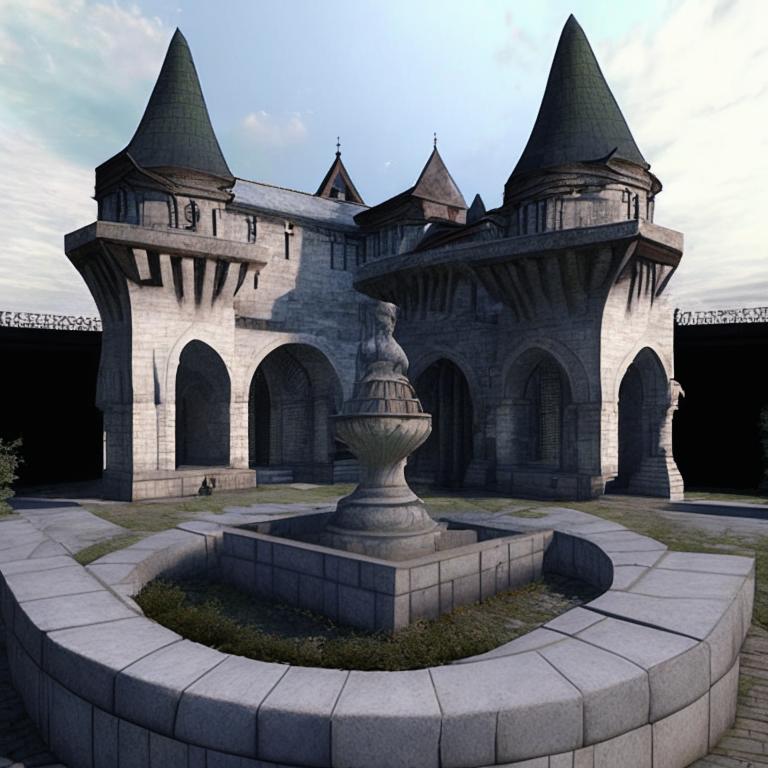
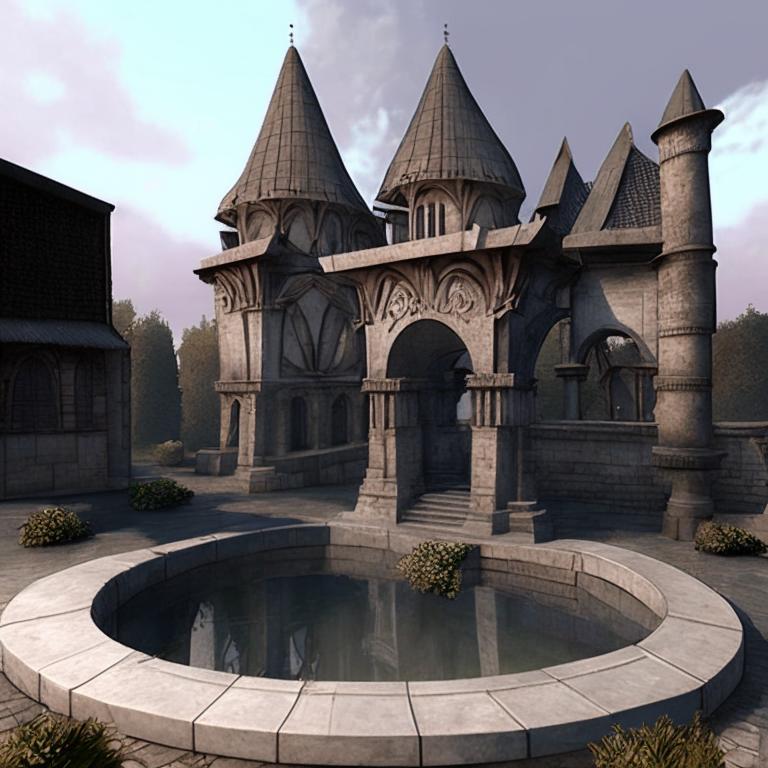

There is no comments